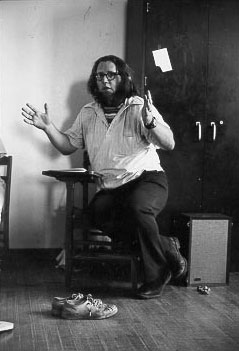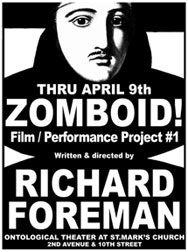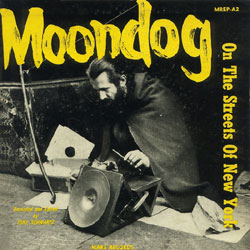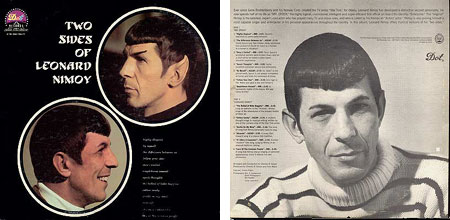THE BEST OF NEW YORK UNDERGROUND
By Dee Dee Vega & Hollis James
Best Thing You Can Legally Get F#*ked Up On…
 Although I’ve recently heard that you can actually smoke legal hallucinogenic sage (yes, like the herb in your kitchen)—
fRINGE’s pick if you’re walking into, say, a bar or other license-holding establishment is 42 BELOW VODKA. Why do we like
42 Below? Well, it’s the vodka that is made in New Zealand at the southernmost part of the world. Guess what else—the devil white
man wasn’t there raping the earth with his white-demon cock and polluting everything in sight until only about 180 years ago. And
what does that mean? Better friggin’ vodka, that won’t give you that nail polish remover-quality hangover (and it tastes
magnificently delicious, too). 42 Below uses water drawn from a thousand feet beneath an extinct volcano. We’re New Yorkers…we
dress the best, know all the cool new bands and indie documentaries first. Now—volcano juice! Check out 42 Below
at 42below.com or ask your local fashionable alcoholic for more info. —DV
Although I’ve recently heard that you can actually smoke legal hallucinogenic sage (yes, like the herb in your kitchen)—
fRINGE’s pick if you’re walking into, say, a bar or other license-holding establishment is 42 BELOW VODKA. Why do we like
42 Below? Well, it’s the vodka that is made in New Zealand at the southernmost part of the world. Guess what else—the devil white
man wasn’t there raping the earth with his white-demon cock and polluting everything in sight until only about 180 years ago. And
what does that mean? Better friggin’ vodka, that won’t give you that nail polish remover-quality hangover (and it tastes
magnificently delicious, too). 42 Below uses water drawn from a thousand feet beneath an extinct volcano. We’re New Yorkers…we
dress the best, know all the cool new bands and indie documentaries first. Now—volcano juice! Check out 42 Below
at 42below.com or ask your local fashionable alcoholic for more info. —DV
Best Sad New York Poet With a Beard You Probably Have Never Read…
 …he had cool glasses too and is alleged to have eaten only cheeseburgers and drank Pepsi until it killed him at 48. He stole
speed prescriptions to fuel his breakneck writing sessions. He’s Ted Berrigan—and he’s the only guy to have written a sonnet in
the past three hundred years who doesn’t make us puke. When the New York School auteurs Frank O’Hara, Ken Koch and John Ashbury
were penning their poems in their little “I went to an Ivy League-lick my ass club” (ok, I’m being a little mean—they’re great,
but no street cred), Berrigan was stealing his friend’s books and selling them on the street to survive. Biography aside,
Ted Berrigan’s poetry has a certain decrepit virtuosity and sullen grace. He is part intellectual, part literary anarchist, part
romancer of words—always an outsider writing with the shabby delicacy of a man looking in. For the first time, Ted Berrigan’s work
has been collected and annotated in one monumental volume—The Collected Works of Ted Berrigan edited by Alice Notley. —DV
…he had cool glasses too and is alleged to have eaten only cheeseburgers and drank Pepsi until it killed him at 48. He stole
speed prescriptions to fuel his breakneck writing sessions. He’s Ted Berrigan—and he’s the only guy to have written a sonnet in
the past three hundred years who doesn’t make us puke. When the New York School auteurs Frank O’Hara, Ken Koch and John Ashbury
were penning their poems in their little “I went to an Ivy League-lick my ass club” (ok, I’m being a little mean—they’re great,
but no street cred), Berrigan was stealing his friend’s books and selling them on the street to survive. Biography aside,
Ted Berrigan’s poetry has a certain decrepit virtuosity and sullen grace. He is part intellectual, part literary anarchist, part
romancer of words—always an outsider writing with the shabby delicacy of a man looking in. For the first time, Ted Berrigan’s work
has been collected and annotated in one monumental volume—The Collected Works of Ted Berrigan edited by Alice Notley. —DV
Best Old School Sensation Keeping It Real…
 Talk about bombing the system—when Tony Silver’s Style Wars first appeared in 1983, the world was witnessing the birth of the
b-boy. Straight-up street swing and new jack style ruled the day, and the culture of cool was defined by graffiti and mad beats.
Style Wars is a time capsule that you want to just curl up in and pretend that the past twenty years of bad hair, Vanilla Ice,
American Idol and George Bush never happened. Break out your Cazals, flip up your collar and repeat after me, “I am in denial.”
Style Wars has recently received a mondo deluxe DVD treatment with three extra hours of furious footage including interviews and
mad views of legendary New York writers like Seen and Kase and the stylings of the Rock Steady Crew. Plus, they have a wicked Web
site: stylewars.com.
Talk about bombing the system—when Tony Silver’s Style Wars first appeared in 1983, the world was witnessing the birth of the
b-boy. Straight-up street swing and new jack style ruled the day, and the culture of cool was defined by graffiti and mad beats.
Style Wars is a time capsule that you want to just curl up in and pretend that the past twenty years of bad hair, Vanilla Ice,
American Idol and George Bush never happened. Break out your Cazals, flip up your collar and repeat after me, “I am in denial.”
Style Wars has recently received a mondo deluxe DVD treatment with three extra hours of furious footage including interviews and
mad views of legendary New York writers like Seen and Kase and the stylings of the Rock Steady Crew. Plus, they have a wicked Web
site: stylewars.com.
—DV
Best Place To Take Your Visiting Mid-Western Relatives That Will Confuse Them and Make Them Hate You…
 I like experimental theatre because I’m just not the type of person that needs a plot or, say, dialogue to make me happy. In the
production notes for his newest production, the first, in fact to incorporate a film component, freakmeister director and Roi of
the East Villlage avant-garde Richard Foreman exclaims, “I realize that I believe that now is the time for a celebration of
elitist art!” And ZOMBOID! does just that. Comfortable in its long-time home at St. Mark’s Church, the performance by
Foreman’s Ontological Theatre features a sexed up cadre of plaid-clad and lip-ringed actors running around and making general
chaos. There are projections filmed by Foreman in Melborne, Australia—but fear not fellow Foremanites. The ferociously fresh
performers are the main, red-blooded attraction. As always, the live-flesh eye-candy is punctuated by an often jarring audio
montage. Audience member listening very, very closely will catch a snippet of The X-Ray Spec’s Oh Bondage, Up Yours!
Yes, Richard, heard it, you devil, you. I’m not going to try to tell you what this play is all about. But I will say it has to
do with sex and transcendental donkeys. You heard me. Transcendental donkeys. Have fun, Aunt Edna. ZOMBOID! runs at the
St. Mark’s Theatre thru April 9, 2006. Check out
ontological.com for more info. —DV
I like experimental theatre because I’m just not the type of person that needs a plot or, say, dialogue to make me happy. In the
production notes for his newest production, the first, in fact to incorporate a film component, freakmeister director and Roi of
the East Villlage avant-garde Richard Foreman exclaims, “I realize that I believe that now is the time for a celebration of
elitist art!” And ZOMBOID! does just that. Comfortable in its long-time home at St. Mark’s Church, the performance by
Foreman’s Ontological Theatre features a sexed up cadre of plaid-clad and lip-ringed actors running around and making general
chaos. There are projections filmed by Foreman in Melborne, Australia—but fear not fellow Foremanites. The ferociously fresh
performers are the main, red-blooded attraction. As always, the live-flesh eye-candy is punctuated by an often jarring audio
montage. Audience member listening very, very closely will catch a snippet of The X-Ray Spec’s Oh Bondage, Up Yours!
Yes, Richard, heard it, you devil, you. I’m not going to try to tell you what this play is all about. But I will say it has to
do with sex and transcendental donkeys. You heard me. Transcendental donkeys. Have fun, Aunt Edna. ZOMBOID! runs at the
St. Mark’s Theatre thru April 9, 2006. Check out
ontological.com for more info. —DV
Best Phony Viking To Ever Stand On A New York Street Corner:
 MOONDOG (AKA LOUIS T. HARDIN)
MOONDOG (AKA LOUIS T. HARDIN)
Those New Yorkers whose daily routes took them by the corner of 54th Street and 6th Avenue from the late forties until the early
seventies were treated to the sight of the imposing figure known simply as Moondog. Standing over six-feet tall, with a long white
beard, dressed in Nordic robes and a Viking helmet, Moondog was a sight no one who saw him is likely to forget. For fans of his
music, the works of this strangely named composer are what they will never forget. Having lost his sight at the age of 17, in a
dynamite cap accident, the blind composer was soon writing his musical compositions in Braille. Upon his arrival in New York,
Moondog began playing music on his chosen street corner (right across the street from Carnegie Hall)—handing out copies of his
records to anyone who would take them—and he almost immediately caused a stir, capturing the imaginations of everyone from
conductor Arthur Rodzinski to Benny Goodman to Walter Wynchell to the Beat writers. Even an impressed Charlie Parker once said
to Moondog, “You and I should make a record.” Sadly Parker died shortly afterward, but Moondog paid tribute to him with “Bird’s
Lament.” Moondog recorded albums for the labels Mars, CBS and Prestige, some of which have been given 180-gram vinyl re-release—such as on the retro arm of Columbia. Moondog once stated that he only listened to his own music because other people’s music was full of
“unspecified mistakes.” Philip Glass and Steve Reich have hailed Moondog as the originator of the concept of minimalism. But
the selfless artist has always been quick to dodge praise, stating, "Bach was doing minimal in his fugues. So what´s new?" In
1999, Moondog shuffled off this mortal coil, and is currently conducting his symphonies to packed houses in Valhalla. —HJ
Best Documentary About A New York Writer Who Survived TB:

HUBERT SELBY JR: IT/LL BE BETTER TOMORROW
Nicknamed “Cubby” since childhood, Selby—the late Brooklyn-born author of the literary masterpieces “Last Exit to Brooklyn,”
“The Room” and “Requiem for a Dream”—is thoughtfully examined in the independent film IT/LL BE BETTER TOMORROW. The
documentary (whose title includes Selby’s signature ‘slashes instead of apostrophes’ writing style that aided the
stream-of-consciousness-minded author in his quest for uninterrupted typing) focuses on the life, work, addictions and
influence of Cubby as told by an impressive and eclectic cadre including Lou Reed, Amiri Baraka, Jerry Stahl, Uli Edel,
Richard Price, Darren Aronofsky and (...ahem…) Susan Anton. One of the most important writers The Big Apple has produced, Selby’s
love for, as he put it, “the music of the speech in New York,” found its way into every word he wrote. During a younger Selby’s
bed-ridden recuperation from various tuberculosis-related surgeries—in which doctors removed one and a half lungs and ten of
his ribs, forcing him to live with so much pain that he later became addicted to, at first, painkillers and then heroin—the
author found an incentive to write. After every doctor assured a teenage Selby (who lived to 75) that he had—at best—a year
to live, Selby decided that writing fiction might be his one chance to ensure that he wouldn’t waste what little life lay
ahead of him. As this perfectly crafted film lovingly illustrates, Cubby succeeded. —HJ
The film: cubbymovie.com
Oddest Record Bought In NYC During a Saturday Morning Hangover:

TWO SIDES OF LEONARD NIMOY, BY LEONARD “SPOCK” NIMOY
I picked up this little gem for 15 bucks, after begging Dee Dee to talk me out of it—she was, obviously, no help. Just what
are the two sides of this complex man, you may ask? Why, one is that highly logical and intelligent rapscallion known as
Mr. Spock on Star Trek and the other is that talented, dramatic wunderkind whom his friends call an “actor’s actor,” of course!
At least these are his two sides as explained by the back cover of the album jacket. The two sides I discovered were
Nimoy, the one-dimentional actor who desperately wants be a talented singer and Nimoy, the untalented singer who is unintentionally funny. The
opening track, “Highly Illogical” is a Vulcan-eyed view of the sexual politics of puppy-love-laden teens. There’s also a frighteningly
earnest cover of the folk song “If I Were a Carpenter,” which succeeds in making listeners everywhere wish Nimoy had chosen carpentry over
singing. “Cotton Candy” is a lighthearted song written by (I shit you not) a member of Star Trek’s camera crew. But the album crosses
over into surreal hyper drive on the track “Amphibious Assault,” which is the chronicle of an alien nation's D-Day-like soggy assault that I
am loath to describe. Complete with dramatic pregnant pauses, Mercury Theater-worthy emotional histrionics and lyrics spoken
with such intensity they’ll genuinely make you shake your head in disbelief, “Amphibious Assault” was meant, I assume, to be
Nimoy’s “Unknown Soldier.” But even Jim Morrison himself in fully blown Lizard King mode would turn his nose up at this amphibious assault. As is the wacky nature of the nutty sixties, however, even this hunk of…uh...vinyl contained one semi-hit (heavy on
the “semi,” light on the "hit") that managed to garner some radio airplay. The content of the song, “The Ballad of Bilbo Baggins,” is
self-explanatory, and, yes, it is everything you hope it is and more. But the video of the song (apparently filmed on a Star Trek lunch break, and featuring a host of Spock-eared dancing girls) is a wide-awake beachfront nightmare that we (proudly?) offer for your viewing pleasure. Enjoy...so to speak. —HJ
Play the video…if you dare: The Ballad of Bilbo Baggins
Best Jazz Legend Found Dead In The East River:
 ALBERT AYLER
ALBERT AYLER
With a death and legacy as mysterious and offbeat as the music he created, tenor saxophonist Albert Ayler is one of the most
important figures in Jazz. Unlike fellow Jazz-music rebels John Coltrane, Cecil Taylor, Archie Shepp and even Charlie Parker—Ayler
didn’t grow out of modern jazz’s gradual Chicago or New York-based evolutions. His influences were more primal, more aligned with
the New Orleans brass tradition. Ayler called upon primitive marches, spirituals, spare rhythms with odd syncopated undercurrents,
horns with variable pitch, wide-open vibrato, notes bending but never breaking, and under it all, deep under it all, an
undeniable melody. Ayler might be called the Alpha & Omega of Free Jazz. The Free Jazz movement had a purpose and prophet while Ayler was
alive, yet his death seemed to underline the dangers for any future players who dared to walk it like they talked it. Ayler saw one possible
path for Jazz’s future as a violent re-imagining of its past—before Louis Armstrong—where improvisation still had some elbowroom,
and the future of jazz might have followed a different trajectory than the one it did. Ayler created a world of sonic
chaos, where church-influenced spirituals and brass band marches furiously alternated with wild flights of free-form improvisation.
For those who are interested in seeking out his music, 1964 was the year of Albert Ayler. His works “Spirits,” “Spiritual Unity,”
“Prophecy” and “Vibrations” laid the groundwork for all his remaining works to come, and are seen today as representative of a
high-water mark in the Free Jazz movement. When Ayler’s lifeless body was pulled out of the East River in 1970, after he’d
been missing for 20 days, some saw it as a pathetic end to a promising career. But sometimes, when you fly too close to the sun,
a plunge in the river is the only way you can put out the fire.
—HJ
|






























































 Although I’ve recently heard that you can actually smoke legal hallucinogenic sage (yes, like the herb in your kitchen)—
fRINGE’s pick if you’re walking into, say, a bar or other license-holding establishment is 42 BELOW VODKA. Why do we like
42 Below? Well, it’s the vodka that is made in New Zealand at the southernmost part of the world. Guess what else—the devil white
man wasn’t there raping the earth with his white-demon cock and polluting everything in sight until only about 180 years ago. And
what does that mean? Better friggin’ vodka, that won’t give you that nail polish remover-quality hangover (and it tastes
magnificently delicious, too). 42 Below uses water drawn from a thousand feet beneath an extinct volcano. We’re New Yorkers…we
dress the best, know all the cool new bands and indie documentaries first. Now—volcano juice! Check out 42 Below
at
Although I’ve recently heard that you can actually smoke legal hallucinogenic sage (yes, like the herb in your kitchen)—
fRINGE’s pick if you’re walking into, say, a bar or other license-holding establishment is 42 BELOW VODKA. Why do we like
42 Below? Well, it’s the vodka that is made in New Zealand at the southernmost part of the world. Guess what else—the devil white
man wasn’t there raping the earth with his white-demon cock and polluting everything in sight until only about 180 years ago. And
what does that mean? Better friggin’ vodka, that won’t give you that nail polish remover-quality hangover (and it tastes
magnificently delicious, too). 42 Below uses water drawn from a thousand feet beneath an extinct volcano. We’re New Yorkers…we
dress the best, know all the cool new bands and indie documentaries first. Now—volcano juice! Check out 42 Below
at  …he had cool glasses too and is alleged to have eaten only cheeseburgers and drank Pepsi until it killed him at 48. He stole
speed prescriptions to fuel his breakneck writing sessions. He’s Ted Berrigan—and he’s the only guy to have written a sonnet in
the past three hundred years who doesn’t make us puke. When the New York School auteurs Frank O’Hara, Ken Koch and John Ashbury
were penning their poems in their little “I went to an Ivy League-lick my ass club” (ok, I’m being a little mean—they’re great,
but no street cred), Berrigan was stealing his friend’s books and selling them on the street to survive. Biography aside,
Ted Berrigan’s poetry has a certain decrepit virtuosity and sullen grace. He is part intellectual, part literary anarchist, part
romancer of words—always an outsider writing with the shabby delicacy of a man looking in. For the first time, Ted Berrigan’s work
has been collected and annotated in one monumental volume—The Collected Works of Ted Berrigan edited by Alice Notley. —DV
…he had cool glasses too and is alleged to have eaten only cheeseburgers and drank Pepsi until it killed him at 48. He stole
speed prescriptions to fuel his breakneck writing sessions. He’s Ted Berrigan—and he’s the only guy to have written a sonnet in
the past three hundred years who doesn’t make us puke. When the New York School auteurs Frank O’Hara, Ken Koch and John Ashbury
were penning their poems in their little “I went to an Ivy League-lick my ass club” (ok, I’m being a little mean—they’re great,
but no street cred), Berrigan was stealing his friend’s books and selling them on the street to survive. Biography aside,
Ted Berrigan’s poetry has a certain decrepit virtuosity and sullen grace. He is part intellectual, part literary anarchist, part
romancer of words—always an outsider writing with the shabby delicacy of a man looking in. For the first time, Ted Berrigan’s work
has been collected and annotated in one monumental volume—The Collected Works of Ted Berrigan edited by Alice Notley. —DV
 Talk about bombing the system—when Tony Silver’s Style Wars first appeared in 1983, the world was witnessing the birth of the
b-boy. Straight-up street swing and new jack style ruled the day, and the culture of cool was defined by graffiti and mad beats.
Style Wars is a time capsule that you want to just curl up in and pretend that the past twenty years of bad hair, Vanilla Ice,
American Idol and George Bush never happened. Break out your Cazals, flip up your collar and repeat after me, “I am in denial.”
Style Wars has recently received a mondo deluxe DVD treatment with three extra hours of furious footage including interviews and
mad views of legendary New York writers like Seen and Kase and the stylings of the Rock Steady Crew. Plus, they have a wicked Web
site:
Talk about bombing the system—when Tony Silver’s Style Wars first appeared in 1983, the world was witnessing the birth of the
b-boy. Straight-up street swing and new jack style ruled the day, and the culture of cool was defined by graffiti and mad beats.
Style Wars is a time capsule that you want to just curl up in and pretend that the past twenty years of bad hair, Vanilla Ice,
American Idol and George Bush never happened. Break out your Cazals, flip up your collar and repeat after me, “I am in denial.”
Style Wars has recently received a mondo deluxe DVD treatment with three extra hours of furious footage including interviews and
mad views of legendary New York writers like Seen and Kase and the stylings of the Rock Steady Crew. Plus, they have a wicked Web
site:  I like experimental theatre because I’m just not the type of person that needs a plot or, say, dialogue to make me happy. In the
production notes for his newest production, the first, in fact to incorporate a film component, freakmeister director and Roi of
the East Villlage avant-garde Richard Foreman exclaims, “I realize that I believe that now is the time for a celebration of
elitist art!” And ZOMBOID! does just that. Comfortable in its long-time home at St. Mark’s Church, the performance by
Foreman’s Ontological Theatre features a sexed up cadre of plaid-clad and lip-ringed actors running around and making general
chaos. There are projections filmed by Foreman in Melborne, Australia—but fear not fellow Foremanites. The ferociously fresh
performers are the main, red-blooded attraction. As always, the live-flesh eye-candy is punctuated by an often jarring audio
montage. Audience member listening very, very closely will catch a snippet of The X-Ray Spec’s Oh Bondage, Up Yours!
Yes, Richard, heard it, you devil, you. I’m not going to try to tell you what this play is all about. But I will say it has to
do with sex and transcendental donkeys. You heard me. Transcendental donkeys. Have fun, Aunt Edna. ZOMBOID! runs at the
St. Mark’s Theatre thru April 9, 2006. Check out
I like experimental theatre because I’m just not the type of person that needs a plot or, say, dialogue to make me happy. In the
production notes for his newest production, the first, in fact to incorporate a film component, freakmeister director and Roi of
the East Villlage avant-garde Richard Foreman exclaims, “I realize that I believe that now is the time for a celebration of
elitist art!” And ZOMBOID! does just that. Comfortable in its long-time home at St. Mark’s Church, the performance by
Foreman’s Ontological Theatre features a sexed up cadre of plaid-clad and lip-ringed actors running around and making general
chaos. There are projections filmed by Foreman in Melborne, Australia—but fear not fellow Foremanites. The ferociously fresh
performers are the main, red-blooded attraction. As always, the live-flesh eye-candy is punctuated by an often jarring audio
montage. Audience member listening very, very closely will catch a snippet of The X-Ray Spec’s Oh Bondage, Up Yours!
Yes, Richard, heard it, you devil, you. I’m not going to try to tell you what this play is all about. But I will say it has to
do with sex and transcendental donkeys. You heard me. Transcendental donkeys. Have fun, Aunt Edna. ZOMBOID! runs at the
St. Mark’s Theatre thru April 9, 2006. Check out
 MOONDOG (AKA LOUIS T. HARDIN)
MOONDOG (AKA LOUIS T. HARDIN)
 ALBERT AYLER
ALBERT AYLER